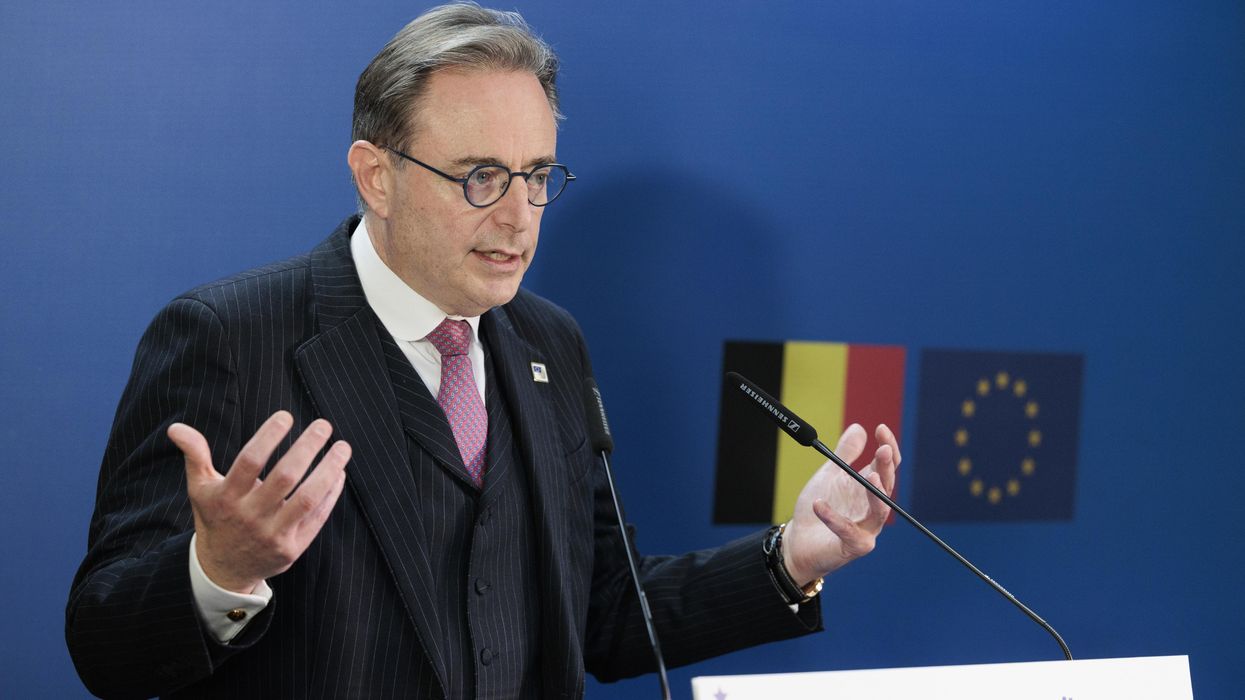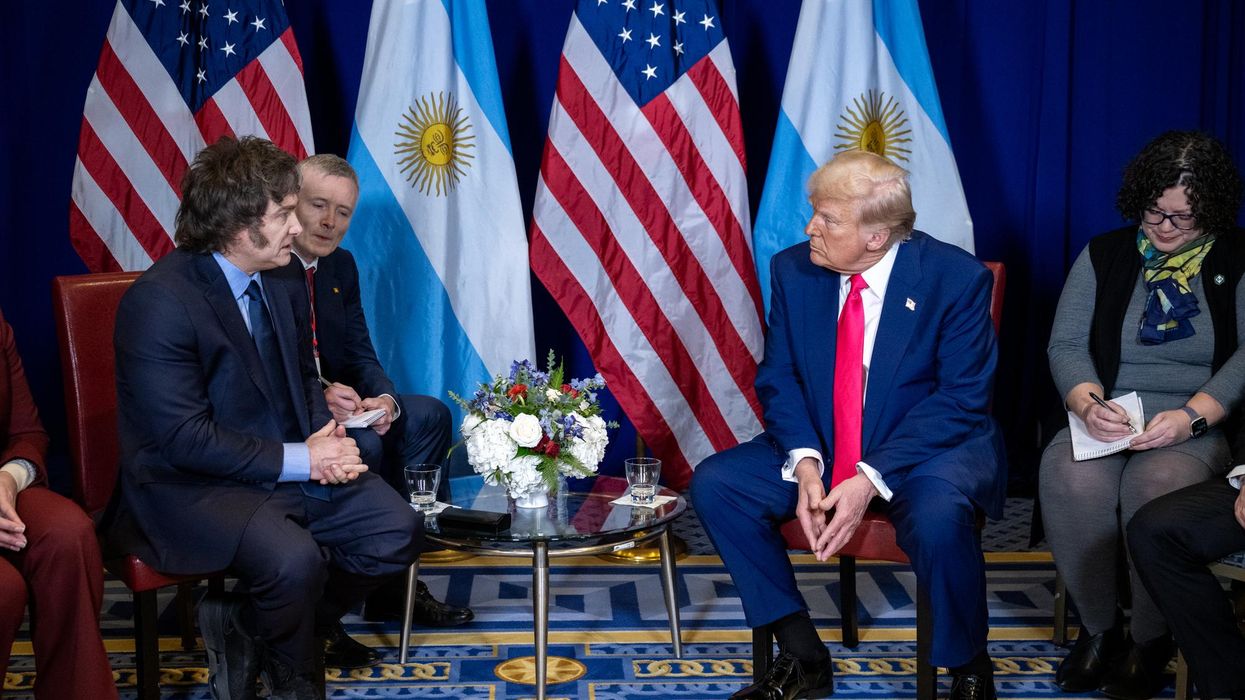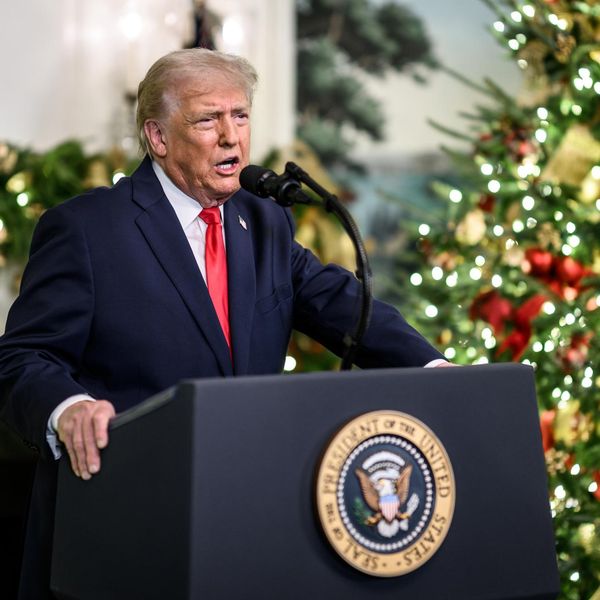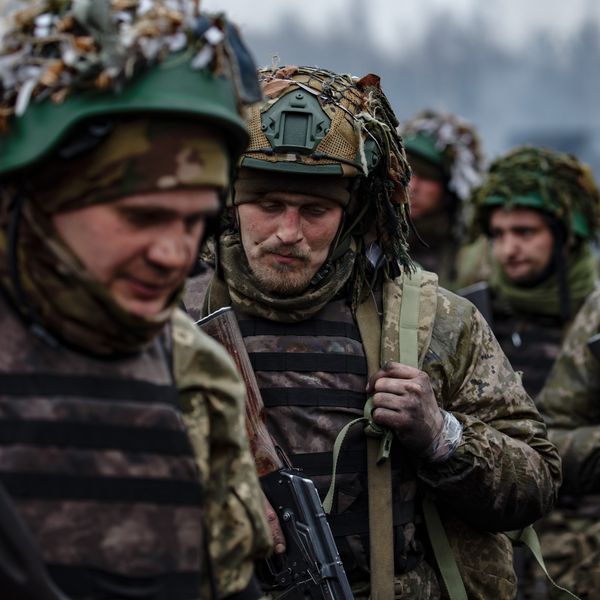When Ukrainian President Volodymyr Zelensky addressed a joint session of Congress last December, Republicans were a critical node in continued U.S. support for his country’s fight against the Russian invasion.
“Zelensky’s speech found a sympathetic ear among members of Congress, who frequently rose to their feet in standing ovations throughout his address,” wrote Responsible Statecraft’s Connor Echols at the time.
Zelensky returns to a vastly changed landscape in Washington Thursday, as a growing number of GOP lawmakers have expressed their reluctance — or outright opposition — to continued funding for Ukraine. “It’s not just far-right members,” a House Republican aide granted anonymity to speak freely told POLITCO. “(Mainstream Republicans are) sympathetic to the cause but we’re throwing money at a conflict that can last for years.”
This may be the reason why Zelensky will be meeting behind closed doors with selected bipartisan members of Congress — including House Speaker Kevin McCarthy — and the White House, and not making another televised address to both chambers.
Congress is currently weighing President Joe Biden’s $24 billion aid request for Ukraine, part of a larger battle over funding the U.S. government for the next fiscal year, which begins October 1.
As the New York Times’ Andrew Kramer put it: the last time Zelensky was in the nation’s capital, he was given a “hero’s welcome.” This time around, he added, the Ukrainian president is on a “more delicate political mission,” both because of a slow-moving counteroffensive in Ukraine, and domestic politics in Washington.
McCarthy, whose position on funding Ukraine has been mixed since he assumed the speakership in January, told reporters that he had some questions to ask the Ukrainian President when they meet. "Where’s the accountability on the money we’ve already spent? What is the plan for victory? I think that’s what the American public wants to know," he said. The Speaker would not commit to whether or not he would support another tranche of aid.
Other members of his caucus have been more direct. Rep. Marjorie Taylor Greene (R-Ga.) — a rare member of the party’s far right flank who has been a consistent ally of McCarthy in a number of disputes over the past year — is opposing his efforts to broker a short-term spending deal between the party’s warring factions because she refuses to vote “to fund a single penny to the war in Ukraine.”
Rep. Byron Donalds (R-Fla.) told reporters on Wednesday that his message to Zelensky is that there is “no money in the House, right now for Ukraine,” and that “it was not a good time for (Zelensky) to be here quite frankly.” Other reactions have said that they will oppose aid unless the Biden administration provides a clear strategy and mission for the war.
These reactions are indicative of a larger movement in the GOP against supporting additional, unconditional aid. The party has been “trending that way since last summer and has accelerated in the last month or so,” according to Dan Caldwell, Vice President of the conservative Center for Renewing America.
The increased opposition to aid reflects shifts in Republican public opinion outside of the Beltway. A CNN poll from last month showed 71 percent of Republicans believed that Congress should not authorize new funding.
However, while some of the loudest voices in the House are speaking out against more aid, advocates of continuing support are trying to paint a more nuanced picture. The group Defending Democracy Together, which is led by neoconservatives Sarah Longwell, Bill Kristol, and others, and which has launched an effort aimed at putting pressure on Republicans to support Ukraine, released a report card on House GOP members in advance of Zelensky’s visit. Judging by votes on five pieces of legislation along with its own analysis of their past statements, the group gave out 82 As, 43 Bs, 8 Cs, 17 Ds and 72 Fs.
On the other side of the Capitol, Senate Republicans have been more steadfast in their backing of Kyiv. Senate Minority Leader Mitch McConnell (R-Ky.) has endorsed the White House’s proposal. On Tuesday, during remarks about the looming government shutdown, McConnell added that he was “looking forward to seeing President Zelensky on Thursday,” and that it was “always good to remind everyone that a good portion of the money allocated to Ukraine is being spent in this country to rebuild our industrial base.”
But even in the Senate, efforts may become more complicated. On Wednesday, Sen. Rand Paul (R-Ky.), who single-handedly delayed an effort to send $40 billion in aid to Ukraine last May, published an op-ed in the American Conservative saying that he “will do everything in (his) power to block a bill that includes funding for Ukraine.”
“No matter how sympathetic we are to the Ukrainian people, my oath of office requires me to put the American people first,” Paul wrote. “I encourage my colleagues to oppose any effort to hold the federal government hostage for Ukraine funding.”
Zelensky is confronting a different political reality than the one that greeted him last year. On the battlefield, Ukraine’s counteroffensive has not yielded the results that many analysts and officials predicted, raising the prospects of a protracted conflict.
In Washington, not only has the push against continued funding from Congressional Republicans grown in number and in intensity, but the debate over sending more money to Ukraine is only a part of a larger battle over the government budget. Conservatives in the House have threatened to force the government to shut down if a list of demands, including no “blank check” for Ukraine, are not met. There have been few signs of progress in Congressional disputes over legislation to fund government agencies and Biden’s request for more aid now hangs in the balance.- Most Americans don't want Congress to approve more aid for Ukraine war ›
- Zelensky in Washington today to address Congress, meet with Biden ›
- Speaker McCarthy drops 'blank check' for 'full support' of Ukraine aid ›
- Ukraine aid fight is central to government shutdown debate - Responsible Statecraft ›
- Biden says Ukraine has already won. He's right. - Responsible Statecraft ›
















